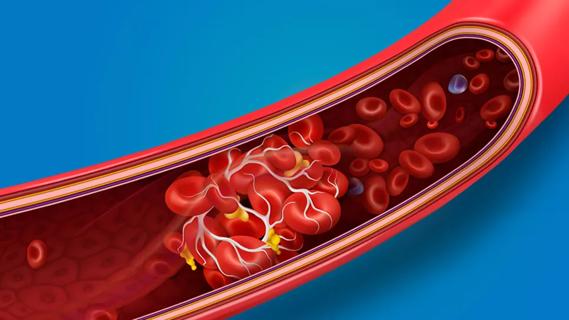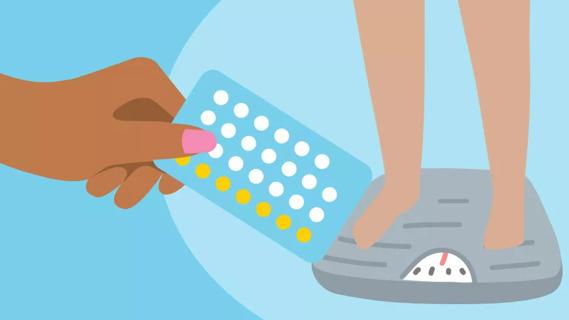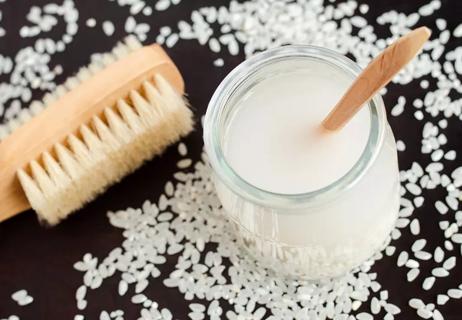Advertisement
Although it can be alarming, it’s normal to experience blood clots during menstruation

Having a period is normal. And while a menstruation cycle can vary in length, amount and frequency, menstrual blood clots (or sometimes referred to as period clots) can be a scary thing when you see them.
Advertisement
Cleveland Clinic is a non-profit academic medical center. Advertising on our site helps support our mission. We do not endorse non-Cleveland Clinic products or services. Policy
Most blood clots during periods are also normal, but if you experience large blood clots during your period and notice changes in your menstrual cycle, it may be time to talk to a healthcare provider.
Ob/Gyn Salena Zanotti, MD, further discusses period blood clots, what they mean and when you need to be treated.
You may be wondering: “I’m having jelly-like blood clots during my period, is that normal?”
Most menstrual blood clots are normal. At the beginning and the end of your cycle, they may appear bright red. Because your flow is moving quickly, the blood doesn’t have time to darken. You may also see dark red or maroon clots during the first few days of your period when your flow is the heaviest.
During menstruation, the hormones in your body cause the lining of your uterus to begin shedding. During that process, small blood vessels bleed. To prevent your body from losing too much blood, plasma and platelets work together to form blood clots.
“Blood clots will form anytime you have a certain amount of blood that just sits there,” Dr. Zanotti explains. “Blood clots are supposed to happen to some degree, like when you cut yourself. But with period clots, what happens is, if you’re having a good amount of bleeding, it collects inside your uterus and as it sits there, it will make a clot.
“You may feel a clot if you’ve been in bed or been sitting and then you stand up,” she continues. “A clot will either come out then or when you go to the bathroom.”
Your cervix has to dilate in order to pass big blood clots during your period. The pain can be strong. If you have a heavy flow and experience cramping, this is partially why you have pain.
What if you have a heavy period with clots?
If you have heavy menstrual bleeding, it can be serious. But Dr. Zanotti says it also depends on each situation. Providers will consider the size and frequency.
“You may have really small clots that might be a dime-size or a quarter-size during your period and that’s normal for you,” she says. “It’s problematic if you’re passing golf ball-sized clots and passing them every couple of hours.”
You should also be concerned if you must change your pad or tampon about every hour.
“You may have heavy bleeding if you’re soaking through your pad in an hour and it happens for a couple of hours in a row,” Dr. Zanotti notes. “That’s a significant amount of bleeding.”
It’s also possible to become anemic or have low blood pressure after losing too much blood.
“If heavy bleeding happens once during a cycle and it’s not repetitive, that’s not so concerning,” Dr. Zanotti clarifies. “You have to look at the pattern of how frequently it’s happening and how long it’s actually lasting.”
Could your huge blood clots during your period be caused by something else?
Many conditions can cause someone to have abnormally large blood clots or experience a heavier flow than normal. Some include:
Advertisement
If you’re pregnant and experience blood clots, contact your doctor or go to the nearest emergency room. You may be having a miscarriage or an ectopic pregnancy, which can be life-threatening.
Period blood clots are a normal part of your menstrual cycle. But when you notice any changes to the size and amount, it could point to an underlying condition. When speaking to your provider, be prepared with the following information:
Expect your provider to do a pelvic exam. They may also want to do a blood test, a pap test or an ultrasound during your visit.
When it comes to treatment of large clots, after an exam and testing, your provider may prescribe the following based on the results, how severe the clots are and your other symptoms:
Overall, Dr. Zanotti says if you’re concerned about whether blood clots are normal during your period, you should discuss it with your healthcare provider.
“Sometimes, you may just need reassurance about what you’re dealing with — that it may be OK and there’s nothing wrong,” she says. “It can be very common, and it can be managed. You don’t need to suffer and it’s nothing to be embarrassed about.”
Advertisement
Learn more about our editorial process.
Advertisement

You may be more prone to hot flashes if you have anxiety, but hot flashes can also rev up anxiety

While it’s probably not your most fertile time, it is possible to get pregnant if you have unprotected sex during your period

The scenarios vary based on how many pills you’ve missed and whether you take a combination pill or progestin-only pill

An increased risk of blood clots can last for nearly a year after a COVID-19 diagnosis

Despite popular opinion, scientific research shows that most birth control methods don’t contribute to weight gain

Both are needed for a healthy body

Heat starts in your chest and moves up to your neck and face … and then, the sweating begins

While they may not burn calories or cause fevers, these heat waves can make you miserable — but you don’t have to just grin and bear it!

Focus on your body’s metabolic set point by eating healthy foods, making exercise a part of your routine and reducing stress

PFAS chemicals may make life easier — but they aren’t always so easy on the human body

While there’s little risk in trying this hair care treatment, there isn’t much science to back up the claims